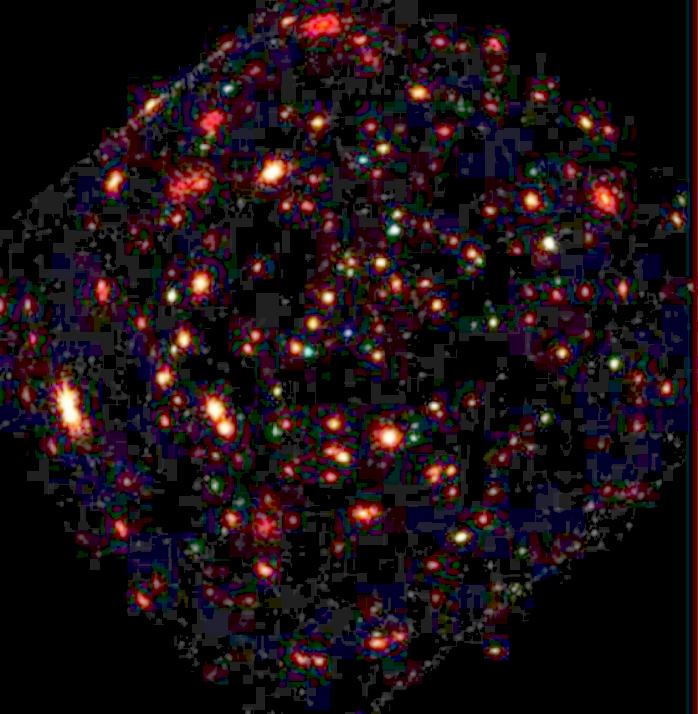


At X-ray wavelengths, there is no "night sky"; the X-ray sky is illuminated
by a diffuse background in nearly all directions. This diffuse X-ray
background was discovered in the early 1960's, but its origin was largely a
puzzle until very recently. It's now recognized that at least the high
energy part of this background is produced by very distant galaxies which
harbor supermassive black holes at their centers. The emission from these
galaxies was unresolved by early X-ray observatories. Newer observatories,
in particular ROSAT, Chandra and XMM-Newton, have sufficient spatial
power to resolve this diffuse glow into individual objects. The image
above is a new picture taken with the XMM-Newton observatory of a region of
the sky called the Lockman Hole, a region in the Milky Way in which there
is little gas or dust to absorb the distant light from faraway galaxies.
This image shows that the diffuse glow seen by other X-ray observatories is
actually composed of individual emission from distant active galaxies. The
object colors represent the average X-ray energy of the emission - red for
relatively low-energy X-ray emission and blue for high energy emission. If
the Universe was infinite in time and uniformly filled with galaxies, then
there would be a true X-ray Olber's paradox. In fact we find that, near
us, there are very few active galaxies. Since X-ray emission from these
galaxies is powered by supermassive black holes swallowing up gas and
stars, this suggests that, as galaxies age, their black holes have less
material to devour, and thus produce less X-ray emission.